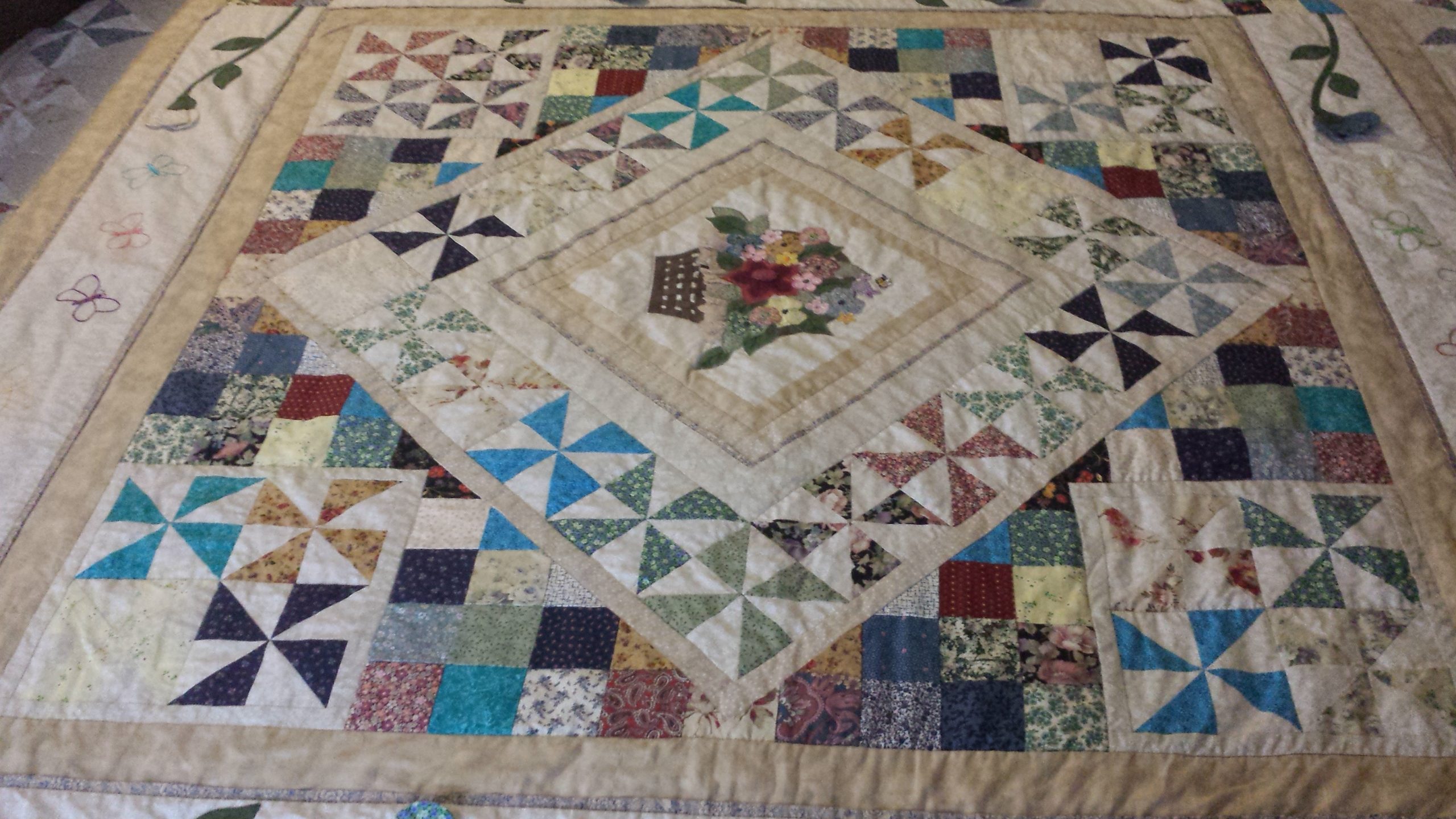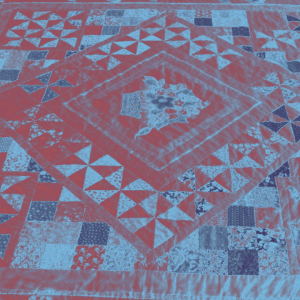15. Adapting OER: Practice in Action
Chapter Subtopics
Before adapting OER materials, it’s important to establish a road map that will guide the timeline of the work, layout and style of the work, and desired changes. Whether your adaptation is small or large, this step is important to ensure a cohesive and consistent final product. Below are tips to help you with style and consistency.
Collections vs. Adaptations
In an adaptation / remix, intellectual property is synthesized into a new text, where one often cannot tell where one open work ends and another one begins. Creators must provide attribution to the individual parts that went into making the adaptation.
Creating an OER Collection
An OER collection is assembled from separate and independent creative works and combined into a collective whole. A collection is not an adaptation. Here is a collection of openly licensed pictures of clothing:
 |
 |
 |
A collection is like a wardrobe; a remix is like a quilt.
You might store your clothes adjacent in your closet, but they are distinct from one other, a collection of your style. This is kind of like an OER collection, where texts are placed side-by-side, also like an anthology. When creating an OER collection, one must provide attribution and licensing information about individual works. Kind of like clothing labeled with tags.

Remixing OER
When you adapt / remix sections of others’ intellectual property and synthesize into a new text, it’s kind of like making a quilt. For example, this quilt is made from different pieces of fabric, and it’s hard to tell what form the pieces took before being repurposed.
Attributing Adaptations

Like a quilt, when remixing and synthesizing CC-licensed work, it can be hard to tell where one work ends and another begins. However, creators must provide attribution to the individual parts, unlike a quilt that become something completely new.
Adapting Whole Books
If you are adapting a longer work, like an entire textbook, one of the challenges is to create a final product that is consistent throughout. It is highly recommended that you assess the original textbook before you begin. Once this has been done, attempt to match all revised and new text, resources, layout and citation styles to that of the original work.
Assess language and tone
Begin by assessing the style and tone of the original text. Here are some elements to be aware of:
- Is the tone of the language formal, or friendly and conversational? How would you describe the voice?
- How does the author address the reader? From a distance? Or does the author include the reader with phrases such as “we learn” and “you will see”?
- How is punctuation used? For example, are serial commas used, i.e. a comma before “and” when listing three or more things: “the cat, the dog, and the horse” OR “the cat, the dog and the horse”.
- How long is the typical sentence? Paragraph?
- Pay attention to the word count for existing chapters (average and range). Try to maintain this count for both new and revised chapters. Ask your project manager for assistance, if required.
What is the layout?
As you review the textbook, take note of the following:
- Does each chapter contain specific pedagogical features such as Learning Objectives, Exercises, Summary, Suggested Readings, highlighted points of interest?
- Does the author use lists? If so, are bullets or numbers used or something else?
- How are headings used? Are sub-headings used? What is the highest heading level used?
- How long are sections under a heading or sub-heading?
How are resources used?
Resources refer to all items other than text, such as photos, graphs, diagrams and multimedia content (video or audio links). Pay attention to what types of resources the original author used, how often they are inserted, and how they are labeled. Ensure all external resources are either released with an open copyright license or are in the public domain.
- Resources should have a caption (e.g., Figure 1 + description). See the Resources: Captions and Attributions section in the Self-Publishing Guide for details.
- Differentiate between figures and tables (e.g., Figure 1.2 or Table 1.2).
- For adaptations, use the numbering system employed by the original author.
- For new creations, use a numbering system that incorporates the chapter number and image sequence. For example, for the first figure in Chapter 1 caption the figure, Figure 1.1.
- New types of resources can be added to the adapted version however, keep the overall
textbook in mind. When adding a new type of resource ensure that it enhances the flow of the book. - In addition to the above, we suggest the attribution be based on the best practices for attribution recommended by Creative Commons.
References and citation style
When you assess the textbook, identify both the citation style, and how and where references are listed in the book (e.g., at the end of each chapter, at the end of the book, or as footnotes). For an adaptation, it is suggested that you follow the citation style used by the original author to maintain consistency throughout the open textbook. Note how in-text citations are used including punctuation. Consider using the same citation style.
Changing OER Materials
Adapting or changing an existing open textbook doesn’t need to be onerous. The changes you make can be simple such as:
- Changing the title of the book, some or all of its chapters or chapter sections
- Adding one or two new images
- Removing a chapter that isn’t pertinent to your course
- Removing a chapter to be used, leaving the rest of the book behind
Sometimes, an adaptation might require more than a few simple changes. For example:
- A significant number of chapters might be removed, leaving behind just the ones that fit the course curriculum.
- Chapters might be reordered to more accurately fit the order in which material is presented in a course.
It might be necessary to add material from other open textbooks or open educational resources to the open textbook you are adapting. Maybe you decide to write new material to fill in the gaps of an existing textbook such as new examples or exercises. (If you do this and plan to release the finished work as an open textbook, remember that your new work will be included under this license.)
Tracking Your Updates
As the author, you retain copyright of all new material you create. This means that even if the new material you create is released under an open license, as the author, you will receive attribution for your contribution.
As you edit and make changes (text and images) and/or add new material, keep a list so these additions/changes:
- Can be included as part of the Copyright Notice
- Can be accurately attributed to you, the author
Minor changes, such as fixing grammatical or spelling mistakes, don’t need to be documented.
If you add material from another openly licensed work to your adaptation, especially text, record the source and where it is used in your adapted version. This information is needed for the wording and placement of each attribution statement required for each open CC BY (Creative Commons Attribution) licensed work you use. For more information, see Attribution Statement.
Changing images: add new ones or remove old ones
With an openly licensed resource, you are welcome to remove images that don’t fit your needs or you can add new ones. You are also permitted to edit existing images. (Check the license of the image you plan to change to ensure that its permissions fit your intended change.) You may also edit and alter images if you would like.
Editing Your Adaptations
Even the best author benefits from the keen eyes of a copy editor. This individual looks at your work with fresh eyes and can provide feedback on grammar, spelling, readability, clarity, and consistency.
A subject matter expert (SME) — presumably a colleague or other individual who is an expert on the topic you’re writing about — can provide suggestions about the content. It is best that the SME reviews your work before the copy editor.
One final step is to have a copy editor (preferably different than the one who copy edits your work) proof read the final draft.
License and Attribution
Adapting OER: Practice in Action is a synthesis of two chapters—Make a Plan and What Are the Changes—in the Adaptation Guide Copyright © 2016 by BCcampus, which is licensed under a Creative Commons Attribution 4.0 International License, except where otherwise noted along with original material by Jennifer Jordan, the content under the subheading Collections vs. Adaptations, and this textual content is licensed CC BY 4.0
Image Credits:
- Cedar closet in the bedroom in Woodrow Wilson House by Tim Evanson, licensed CC BY-SA 2.0
- Clothes by Michaela Pereckas is licensed CC BY-SA 2.0
- Clothes by Sincere Finchy is licensed CC BY-SA 2.0
- Quilt 2 by Francis.arquesa, CC BY-SA 3.0
- Modified Quilt by Jennifer Jordan is an adaptation of Quilt 2 by Francis.arquesa, CC BY-SA 3.0, and is licensed CC BY-SA 3.0

